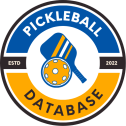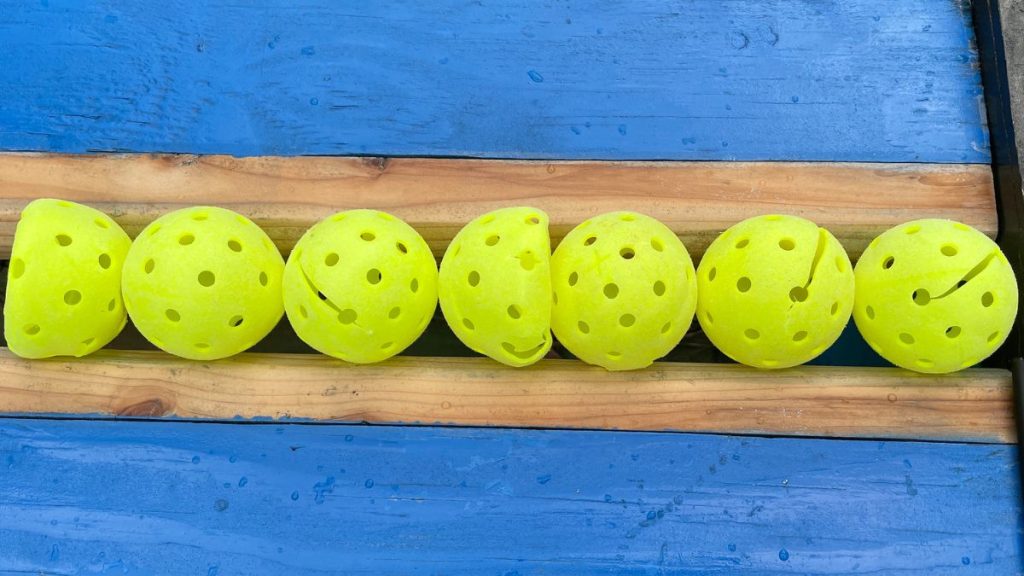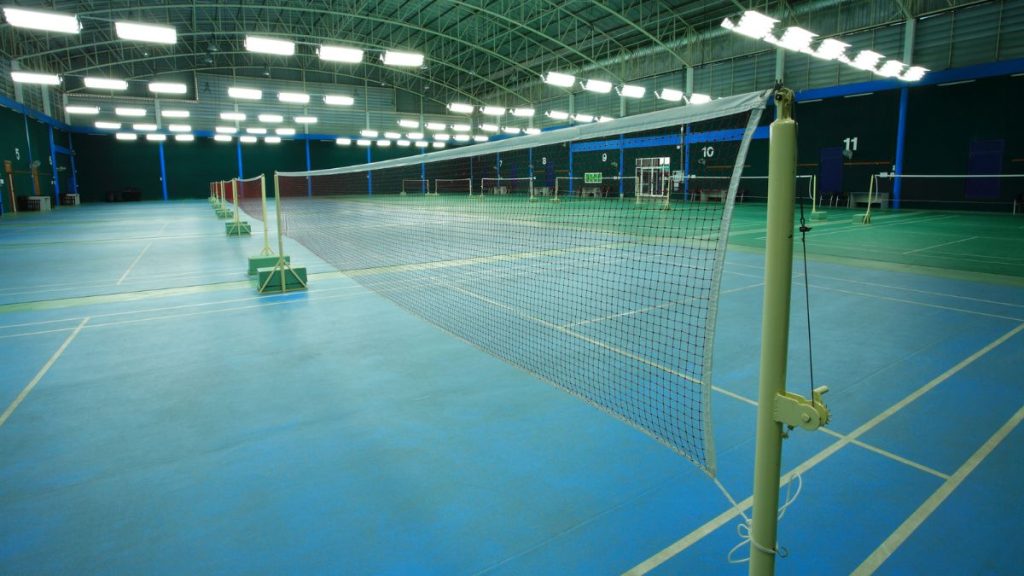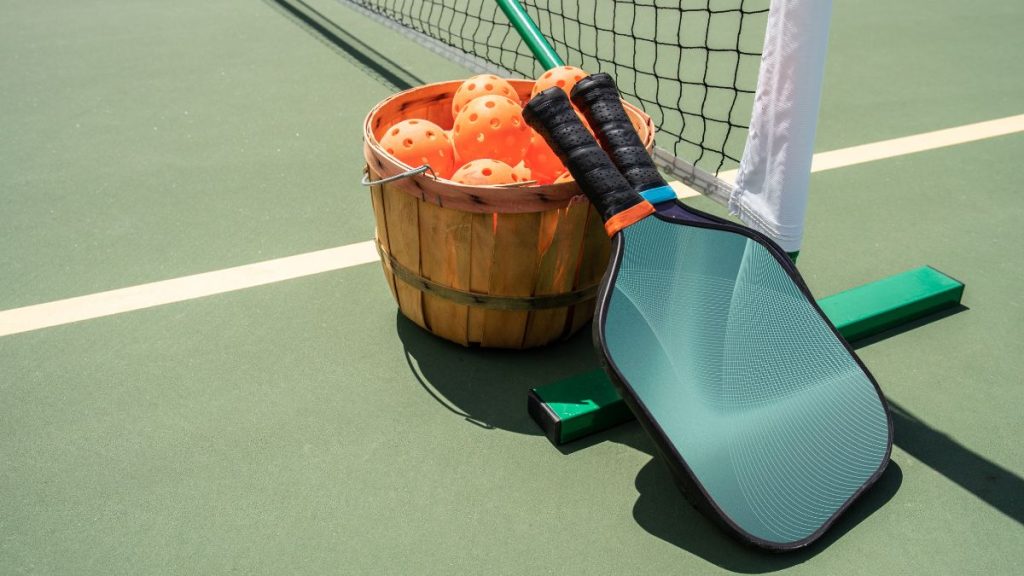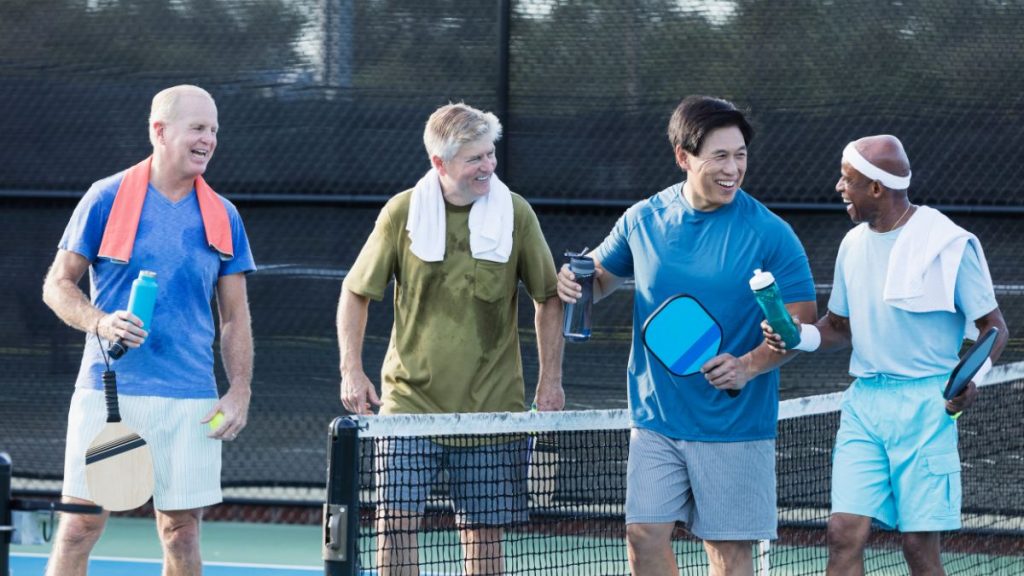Pickleball is one of the most entertaining and exciting games out there. If you are quite serious about the game, you will probably play it at least three to four times a week. But sometimes you have to spend some money on pickleball balls. Some people say they need two balls in a game, while others require four balls per game. So, which one should it be? How long do pickleball balls last?
Most likely, pickleball balls can last for a few days or weeks, sometimes in a few games, or even months, depending on several factors. Pickleball balls that are used indoors and outdoors have different lifespans. The lifespan of the pickleball ball will also depend on the temperature, the player’s style of playing the game, the brand of the pickleball ball, as well as the type of surface where they make contact, including wood, concrete, and asphalt.
Do pickleball balls go bad? Understanding what causes your pickleball balls to go bad can help you make better choices. Below, we are going to explore more about pickleball balls.
Is There a Difference in Pickleball Balls?
Generally, there are two types of pickleball balls, outdoor and indoor. Outdoor balls are made of thicker plastic, making them slightly heavier and more durable. They have smaller holes and are harder compared to indoor balls. That is why they can come off the paddle faster. Smaller holes are used in outdoor balls, so strong winds won’t greatly affect them.
On the other hand, indoor balls are made of thinner plastic and a bit lighter. They have larger holes, unlike outdoor balls. Indoor balls are much softer, making them easier to control. Since these balls are made of thinner plastic, they move slower. They can’t travel faster because they are softer; this is why indoor rallies typically last a bit longer.
Most players usually use their pickleball balls until they crack or break. Top players will immediately notice when their balls wear out because the shape will change, and the plastic will soften. For optimal performance, it is advisable that you should change your ball before they crack or break. There is no standard length of time when the ball will wear out. However, if you feel that the bounce of your ball is quite odd or does not travel as far as it should, these are indications of wear.
How Long Do Pickleball Balls Last?
Outdoor Pickleball Balls
Usually, outdoor pickleball courts are either pickleball-specific or tennis courts customized for pickleball. The surface of the court is either made of concrete or asphalt. Remember that the ball reacts to these surfaces differently than on indoor courts. The pickleball balls used for outdoor courts are made of tougher plastic compounds and have smaller holes. Hence, if an outdoor ball hits you on any part of your body, it could hurt more than indoor balls. These outdoor balls have specific numbers and sizes of holes because they are effective when playing during windy weather conditions.
With smaller holes, less wind will get into the ball so that the ball can travel smoothly through the air. Although players are permitted to use outdoor balls for indoor courts and vice-versa, doing so will likely affect the ball’s lifespan. Most probably, you will immediately notice some cracks on the ball, the ball will get smoother faster, and eventually, it will become ineffective. Indoor balls are made of softer plastics, so if you keep knocking them on harder surfaces such as concrete or asphalt, the plastic will certainly wear out.
Indoor Pickleball Balls
Typically, indoor pickleball courts are made of wooden floors. They are lined so pickleball can be played on these courts. The ball’s reaction on the wooden surface is not the same as on concrete or asphalt. There are fewer larger holes in indoor balls, and the plastic material is softer since it will not make contact with harsh surfaces such as concrete and asphalt. Consequently, it does not need wind resistance.
Although outdoor balls can also be used for indoor pickleball, players might not be able to obtain their optimum performance. Also, softer balls will quickly show indications of wear if you are always making power shots. However, when used by meticulous players that enjoy a slower game, softer balls can last much longer.
How Can You Tell If Pickleball Ball is Bad?
Outdoor Pickleball Balls
Do pickleball balls go bad? If you keep using the same ball every time you play, it will wear down and turn into a different shape. Most often, its shape will be the same as an egg, wherein one side is more protruding, and the other begins to squish, also referred to as egging. Using an “egged ball” consistently when playing can weaken its central part and cause it to break or crack unexpectedly. That is why sometimes it is also typical for some pickleball balls to go bad than others.
You will know if a pickleball ball begins to wear since its hard plastic will quickly get softer. This means that you won’t be able to hit it as hard as you did before. Furthermore, you can feel changes every time you hit it with your paddle and how it travels throughout the court. Likewise, you won’t be able to perform successfully with a softer ball since your shots will be affected.
Indoor Pickleball Balls
When used on wooden surfaces, indoor balls can bounce high. However, this can be a disadvantage for competitive players since if the ball bounces too high on the opponent’s side, it can give them a chance to have a good shot due to the steeper angle. That is why when players use new balls, they strike them against walls so that the balls will become softer and, eventually, their bounce will be lower.
Do Pickleball Balls Lose Their Bounce?
Pickleball balls are made of hard plastic that will wear down in the long run as you hit them with the paddle or as it touches the court’s surface. Eventually, during this process, the plastic material will weaken and become incapable of performing the same level of bounce and accuracy just as before.
However, it will take several weeks or longer before the ball loses its ability to bounce. But the ball will quickly wear if you hit it harder on a tougher surface. When it comes to appearance, the ball’s surface will become smoother as it wears out. This is the same as how your car’s tire wears down after driving it for a few miles.
Can Weather Affect the Performance of A Pickleball Ball?
Do you know that professional players believe the climate has something to do with their chances of winning? That is why it is not surprising that they usually consider the climate on the day of their match.
The molecules in plastic will likely loosen because of heat, making it softer. On the contrary, the cold weather will do the exact opposite since it will compress them, which will become harder. Remember that pickleball balls are made of a plastic compound, so they will always be affected by the present temperature. Considering this, smart players always plan their next shot carefully.
If you try placing a cup of hot chocolate in a cold glass, then there are chances that the glass will become brittle or it might crack. This principle also applies when you use a softer ball in cold weather when playing pickleball. The ball will become harder due to the cold temperature. As the ball becomes softer or harder, the molecular structure of the ball will weaken, and as a result, it will crack more easily.
The same goes for a harder ball. If you use a harder ball during rainy weather, its molecules will disintegrate, causing the ball to soften more quickly. But the molecules will integrate again as the temperature cools. As this process keeps repeating, it can cause the ball to weaken and become more vulnerable to cracks and changes its shape.
Additionally, balls tend to bounce unexpectedly during colder weather because of their protruding and harder surface. While softer balls have a flatter surface area, they have more predictable bounce and hit patterns.
It is important to understand that balls tend to be more unpredictable during colder climates than in warmer climates. For instance, players must compensate when football is played in freezing temperatures since footballs will bounce differently, particularly when kicked.
Conclusion
When it comes to pickleball balls, indoor balls tend to last longer since they are softer, make contact with wooden surfaces, and are not exposed to weather elements. On the other hand, outdoor balls will likely crack faster since they often make contact with harsh surfaces such as concrete and asphalt, and they often fight against the sun’s heat while the wind keeps knocking on them.
